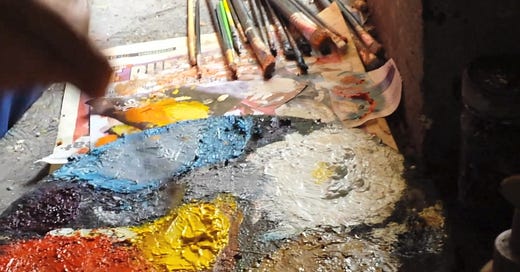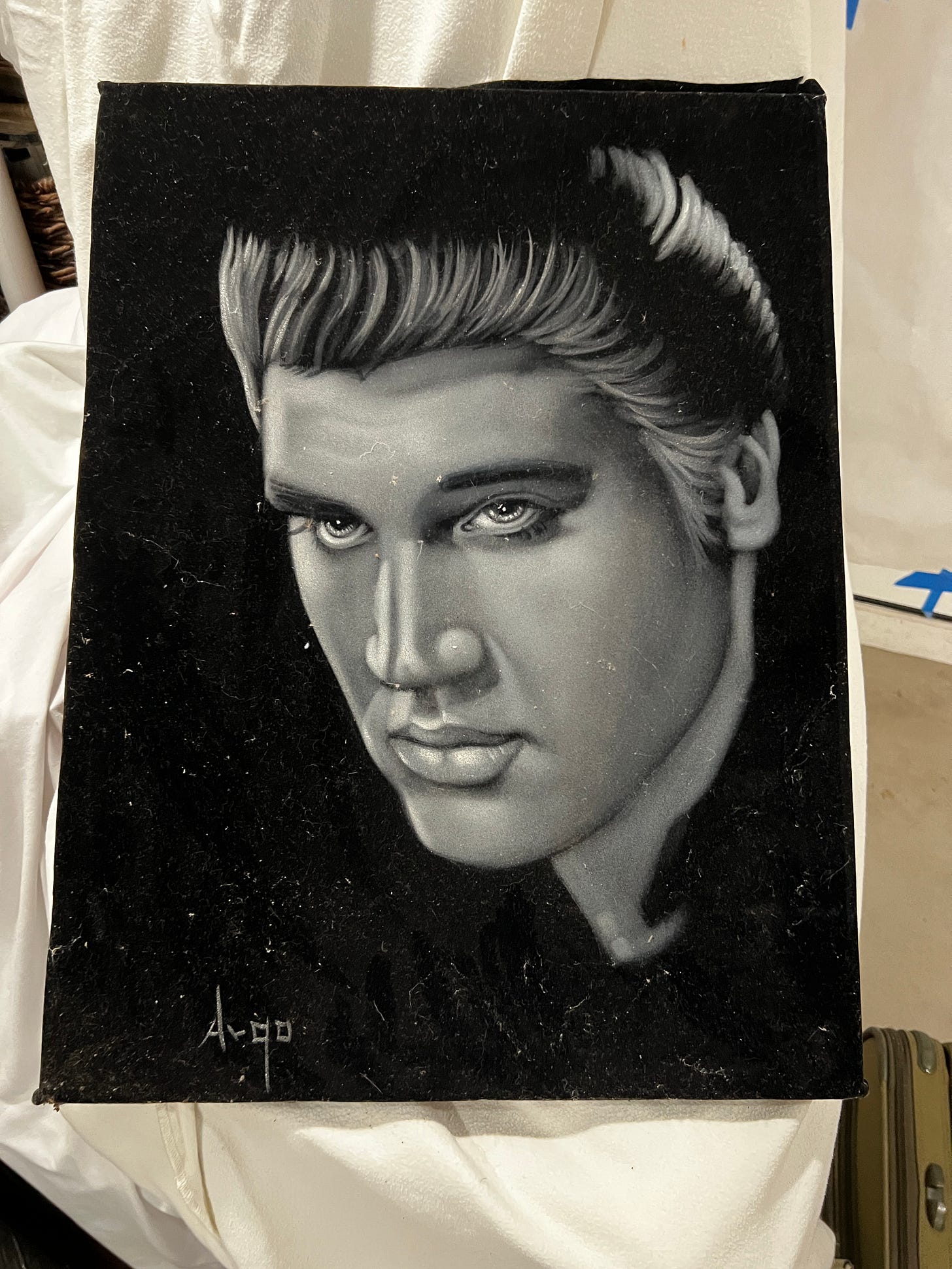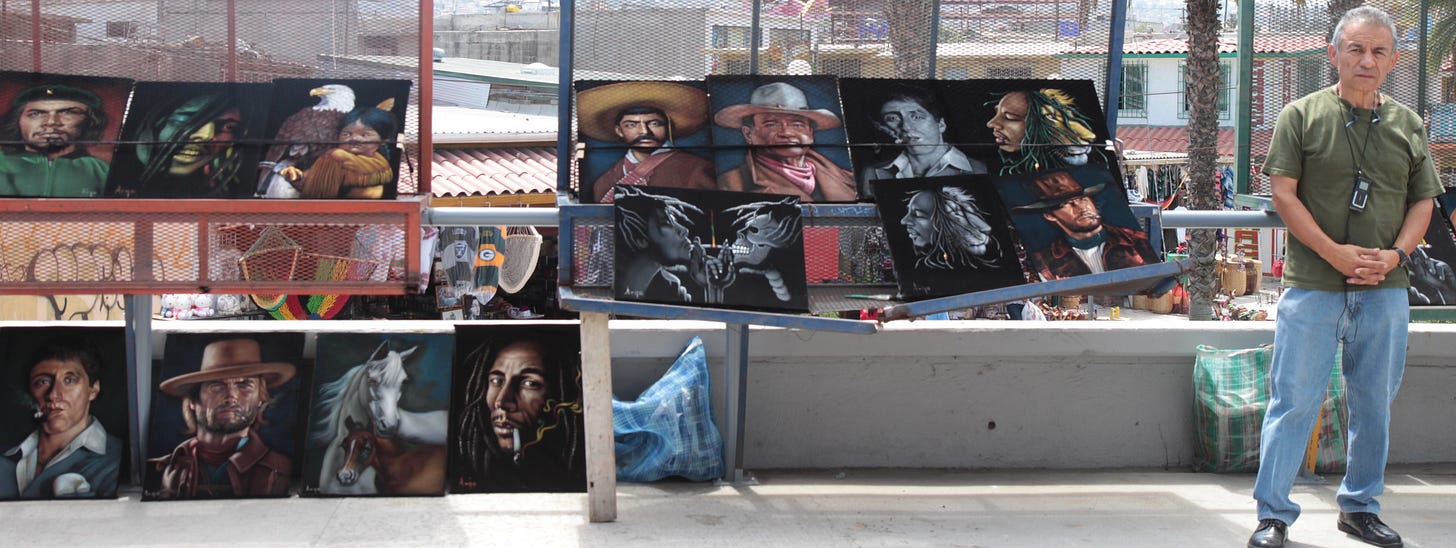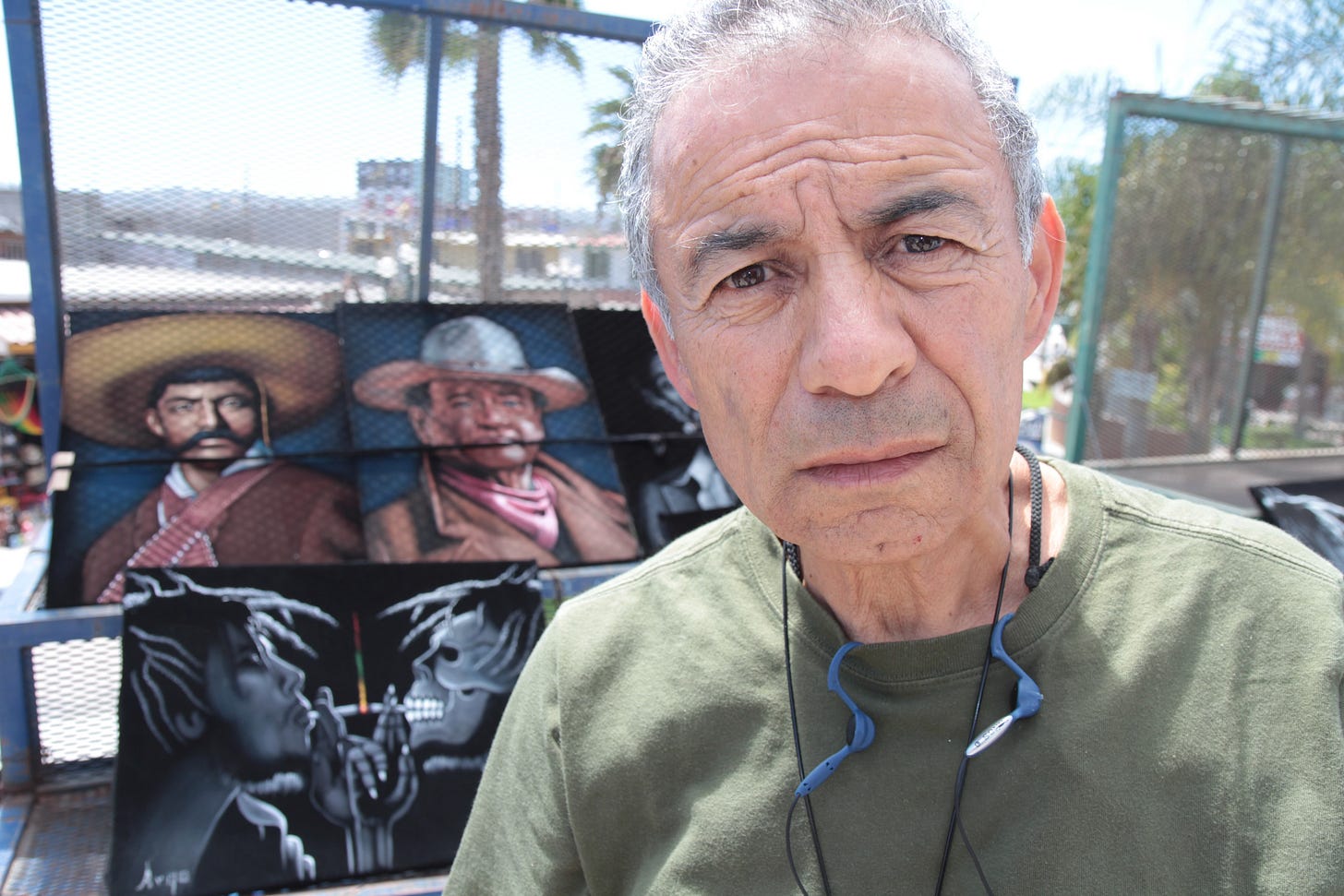There was a time when every American had to have a velvet painting of Elvis, or Dogs Playing Poker, Jimi Hendrix or John Wayne.
Kitsch was king. It’s hard to explain why Americans thirsted for velvet paintings in the 1970s, but they did. Almost all these velvets were painted in Mexican border towns, mostly Juarez and Tijuana.
It got so wild that one guy in El Paso, Doyle Harden, set up a mass-production line of Ciudad Juarez velvet painters, sitting in rows, each painting a small section of a larger picture. The Henry Ford of velvet painting.
Scientology got a huge boost from velvet painting.
Its acolytes found they could pay for their Scientology classes by selling velvet paintings on street corners. Scientologists in Clearwater, Florida bought millions of dollars of velvets for a few years there.
Over in Tijuana, the working-class saw similar gold in velvet. Everyone became painters — cops, taco vendors, you name it. Beginning in the early 1970s, velvet paintings were the town’s first major export — other than people, that is.
Palestinian merchants from Canada would show up every month or so and empty Tijuana of all its velvets, then sell them at Canadian gas stations, swap meets, and their own curio shops.
I wrote all this and more on the border velvet-painting boom in a chapter in my second book, Antonio’s Gun and Delfino’s Dream (which you can buy from me here, hardback and signed, or you can buy it here, not from me and not signed):
In Tijuana, after the velvet boom was long dead, I came upon Argo, one of the few in town who was still at the trade. Toward the end, he was the only one — that I could find, anyway.
In this video above, from some years ago, he talks about some of that history. (I figured this would fit well with my Goodwill Book Review of an Elvis Presley biography. I have a Velvet Elvis of his. Here it is:)
Velvet painters had their own union in Tijuana and sold truckloads of the paintings for a solid decade.
Then it all vanished as quickly as it started. All those velvets ended up in U.S. thrift stores and yard sales.
Most of the painters found other work. A few became fine artists.
Argo was sticking to velvet, last time I saw him.

















Share this post